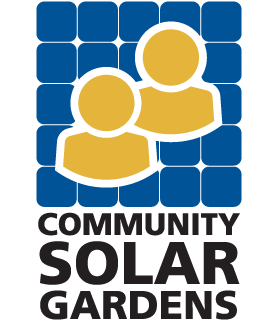Friday the 13th turned out to be a great day in Rushford, Minnesota, home to Tri-County Electric Cooperative. After a handful of informative presentations about community solar gardens, attendees got to tour TEC’s own Renewable Ray installation.
Lissa Pawlisch, director of the Clean Energy Resource Teams, started the event with a Community Solar Gardens 101 lesson, explaining the differences often seen between Co-ops, Municipal Utilities and Investor-Owned Utilities. With that background in place, Ted Kjos, vice president of marketing and external relations for Tri-County Elecric Cooperative, described the journey they went through to get their community solar garden in place.
Ted explained Tri-County’s long history of energy efficiency programs. As an organization, they want to help their members conserve energy and have been applying many different technologies to showcase the variety of energy-saving possibilities and to help meet conservation goals. Their facility, which is surrounded by native prairie and rain gardens, is Energy Star certified and utilizes geothermal, which is looped under the prairie. Prior to their community solar garden, they have had a green pricing program, providing options for their customers, which they feel is very important.
Ted and his colleagues first began thinking of Renewable Rays, what their community solar project would ultimately be called, in 2010. With a history of trying to give their customers options as to the kind of energy they used and Ted’s experience and interest in renewables, conservation, and efficiency, Tri-County hoped to include renewables into their distribution system and become a leader in promoting renewable energy. There weren’t many models to look at or business and financing models to emulate, and being a cooperative, they wanted to make sure they were spending member dollars equitably. After a solar siting study was performed, their land had about 2MW of solar potential, and exciting prospect, but Tri-County first wanted to make sure the member interest was there.
After getting a commitment from top management, Tri-County moved forward with surveys and focus groups with their members, including important questions about how much members would be wiling to pay to take part in a community solar garden. With strong feedback from members and a favorable response from the board, they got moving with a project. Originally planning to build a 40kW system, the response was so great from members in the first 2.5 weeks, that they expanded to its current size, 73.8 kW. The system that Tim Golden, of Winona Renewable Energy LLC, installed includes 180, 410-watt modules, which are manufactured by 10k Solar, a Minnesota company, and micro-inverters to take advantage of their ten inverter buses.
Members must have at least one panel (unit), which is 410 watts, to participate, but can purchase more. Tri-County decided on a pay-up front model, which locks members in that portion of energy usage for the next twenty years. Customers pay $1,400 per unit and get a kWh credit on their bill every month based on their percentage of the total monthly production of arrays. Thus far, they are 89% subscribed and in the first year of production, have produced 180,000 kWh, which is slightly above expected. You can see real time data for their array at www.tec.coop/content/renewable-rays. Ted was pleased with the success they had in providing this educational, local renewable energy option, and described exciting plans for an upcoming solar project on their land.
If you’d like to learn more, click to download Lissa’s presentation or Ted’s presentation, and peruse Tri-County Electric’s Renewable Rays website.
See photos from the event in the slideshow below:



